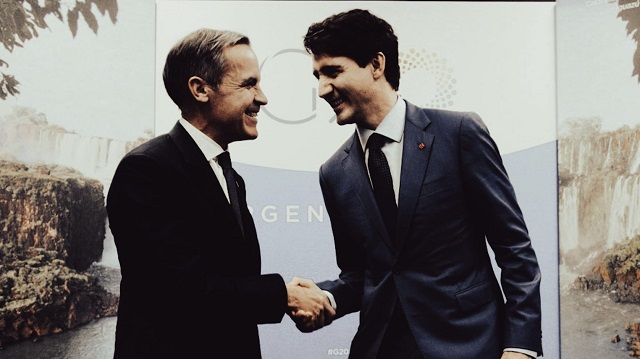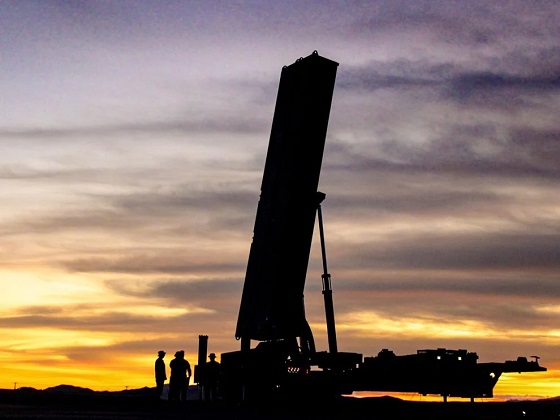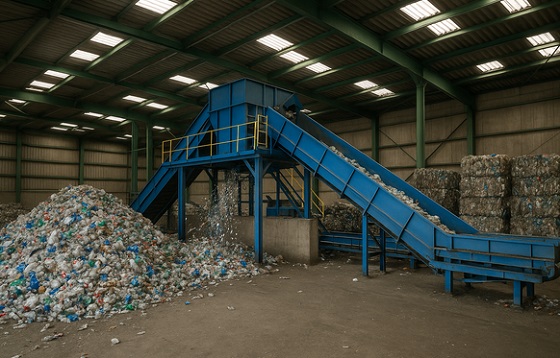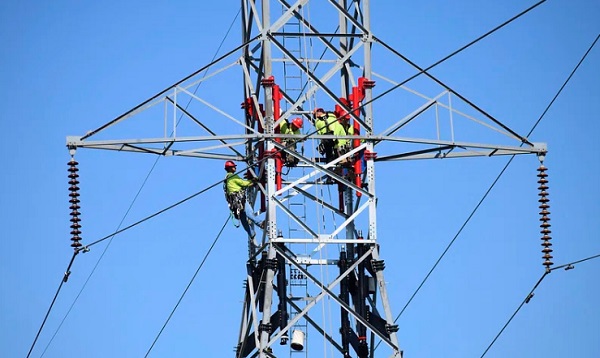Alberta
Police arrest Ponoka man suspected in multiple rural break and enter crimes

From Blackfalds RCMP
Blackfalds and Bashaw RCMP arrest male after public tip received – 41 charges laid
“We appreciate successful outcomes when we utilize our specialized units such as Police Dog Services,” says Sergeant Bruce Holliday of the Bashaw RCMP Detachment. “This investigation drew on several components of our crime reduction strategy such as intelligence gathering, information sharing across jurisdictions and public assistance.”
On Aug. 29, 2018 at approximately 6:15 p.m., Blackfalds RCMP responded to a call from the public regarding a suspicious male near Joffre in Lacombe County. The male suspect who was later identified was on a rural property and appeared to be attempting to steal fuel.
He was located by police and then attempted to flee to a neighbouring vacant property. Police Dog Services (PDS) responded and containment of the area was set up. The suspect was tracked to an outbuilding where he had been hiding by PDS and arrested by Blackfalds and Bashaw RCMP members. He was transported to Blackfalds Detachment and treated by EMS for minor injuries sustained during his arrest.
The suspect was also found to be linked to several other investigations.
On Aug. 1, 2018 at approximately 12: 45 p.m., Bashaw RCMP were dispatched to a break and enter and vehicle theft from a rural property east of Bashaw. The suspect entered a residence and severely injured a dog and stole various items including a vehicle. He then returned to the same property after the vehicle broke down and proceeded to steal another vehicle. As a result of the severe injuries during the break and enter, the dog had to be euthanized.
Over the days and weeks that followed, the suspect was identified as being responsible for a number of rural break and enters and thefts in multiple jurisdictions including Bashaw, Wetaskiwin, Blackfalds and Rimbey. The assistance of the Forensic Identification Service (FIS) were utilized.
Michael Allan Richter (39) from Ponoka, who is known to police as a repeat offender, was remanded into custody. In addition to his 11 charges from the incident on Aug. 29, 2018, he was wanted on two outstanding warrants from Wetaskiwin and Bashaw. Police have laid a total of 41 charges on all incidents.
Some of the charges include:
- Break and enter with intent – Business
- Possession of break-in instruments
- Resist/obstruct a peace officer
- Possession of a Weapon while Prohibited
- Possession of a prohibited weapon
- Possession of Property Obtained by Crime less than or Equal to $5000.00 (x2)
- Fail to comply with Probation Order (x4)
He was remanded into custody and will be appearing on Sept. 4, 2018 in Wetaskiwin and Red Deer Provincial Court.
Alberta
Premier Danielle Smith responds to election of Liberal government

Premier Danielle Smith released the following statement following the re-election of a Liberal government in Ottawa.
I congratulate Prime Minister Mark Carney on his minority government election victory last night.
I also want to sincerely thank Pierre Poilievre for his powerful and principled advocacy against the last decade’s punitive taxation and anti-resource policies that have made our country weaker, more divided and overly-dependent on the United States.
Mr. Poilievre’s vision for a safer, more affordable, united and prosperous Canada drove the policy debate in this country for the last several years and has inspired millions to see the unique potential of our nation. While Liberals and New Democrats demeaned and demonized Albertans, our values and our industries for political gain, Mr. Poilievre made empowering Albertans and our energy sector a cornerstone of his campaign. His respect and admiration for Albertans could not have been clearer. He is and continues to be a true friend of Alberta.
As Premier, I invite the Prime Minister to immediately commence working with our government to reset the relationship between Ottawa and Alberta with meaningful action rather than hollow rhetoric. A large majority of Albertans are deeply frustrated that the same government that overtly attacked our provincial economy almost unabated for the past 10 years has been returned to government.
As Premier, I will not permit the status quo to continue. Albertans are proud Canadians that want this nation to be strong, prosperous, and united, but we will no longer tolerate having our industries threatened and our resources landlocked by Ottawa.
In the weeks and months ahead, Albertans will have an opportunity to discuss our province’s future, assess various options for strengthening and protecting our province against future hostile acts from Ottawa, and to ultimately choose a path forward.
As Premier, I will facilitate and lead this discussion and process with the sincere hope of securing a prosperous future for our province within a united Canada that respects our province’s constitutional rights, facilitates rather than blocks the development and export of our abundant resources, and treats us as a valued and respected partner within confederation.
Our government will be holding a special caucus meeting this Friday to discuss this matter further. I will have more to say after that meeting is concluded.
Alberta
Low oil prices could have big consequences for Alberta’s finances

From the Fraser Institute
By Tegan Hill
Amid the tariff war, the price of West Texas Intermediate oil—a common benchmark—recently dropped below US$60 per barrel. Given every $1 drop in oil prices is an estimated $750 million hit to provincial revenues, if oil prices remain low for long, there could be big implications for Alberta’s budget.
The Smith government already projects a $5.2 billion budget deficit in 2025/26 with continued deficits over the following two years. This year’s deficit is based on oil prices averaging US$68.00 per barrel. While the budget does include a $4 billion “contingency” for unforeseen events, given the economic and fiscal impact of Trump’s tariffs, it could quickly be eaten up.
Budget deficits come with costs for Albertans, who will already pay a projected $600 each in provincial government debt interest in 2025/26. That’s money that could have gone towards health care and education, or even tax relief.
Unfortunately, this is all part of the resource revenue rollercoaster that’s are all too familiar to Albertans.
Resource revenue (including oil and gas royalties) is inherently volatile. In the last 10 years alone, it has been as high as $25.2 billion in 2022/23 and as low as $2.8 billion in 2015/16. The provincial government typically enjoys budget surpluses—and increases government spending—when oil prices and resource revenue is relatively high, but is thrown into deficits when resource revenues inevitably fall.
Fortunately, the Smith government can mitigate this volatility.
The key is limiting the level of resource revenue included in the budget to a set stable amount. Any resource revenue above that stable amount is automatically saved in a rainy-day fund to be withdrawn to maintain that stable amount in the budget during years of relatively low resource revenue. The logic is simple: save during the good times so you can weather the storm during bad times.
Indeed, if the Smith government had created a rainy-day account in 2023, for example, it could have already built up a sizeable fund to help stabilize the budget when resource revenue declines. While the Smith government has deposited some money in the Heritage Fund in recent years, it has not created a dedicated rainy-day account or introduced a similar mechanism to help stabilize provincial finances.
Limiting the amount of resource revenue in the budget, particularly during times of relatively high resource revenue, also tempers demand for higher spending, which is only fiscally sustainable with permanently high resource revenues. In other words, if the government creates a rainy-day account, spending would become more closely align with stable ongoing levels of revenue.
And it’s not too late. To end the boom-bust cycle and finally help stabilize provincial finances, the Smith government should create a rainy-day account.
-

 2025 Federal Election2 days ago
2025 Federal Election2 days agoNine Dead After SUV Plows Into Vancouver Festival Crowd, Raising Election-Eve Concerns Over Public Safety
-

 2025 Federal Election2 days ago
2025 Federal Election2 days agoMark Carney: Our Number-One Alberta Separatist
-

 2025 Federal Election2 days ago
2025 Federal Election2 days agoCanada is squandering the greatest oil opportunity on Earth
-

 International1 day ago
International1 day agoU.S. Army names new long-range hypersonic weapon ‘Dark Eagle’
-

 Business1 day ago
Business1 day agoOttawa’s Plastics Registry A Waste Of Time And Money
-

 Alberta3 hours ago
Alberta3 hours agoPremier Danielle Smith responds to election of Liberal government
-

 Business1 day ago
Business1 day agoNet Zero by 2050: There is no realistic path to affordable and reliable electricity
-

 Business1 day ago
Business1 day agoTrump demands free passage for American ships through Panama, Suez





